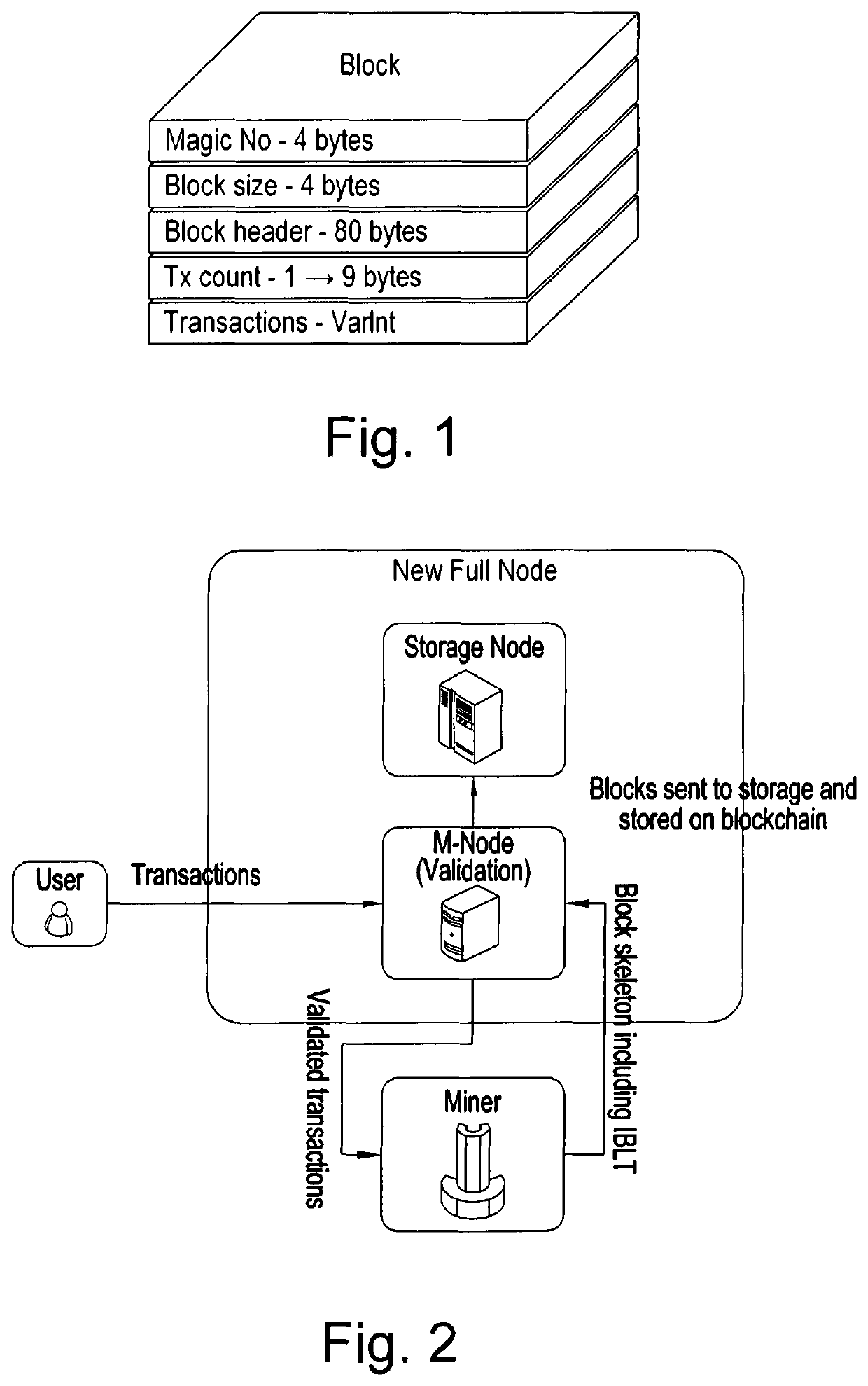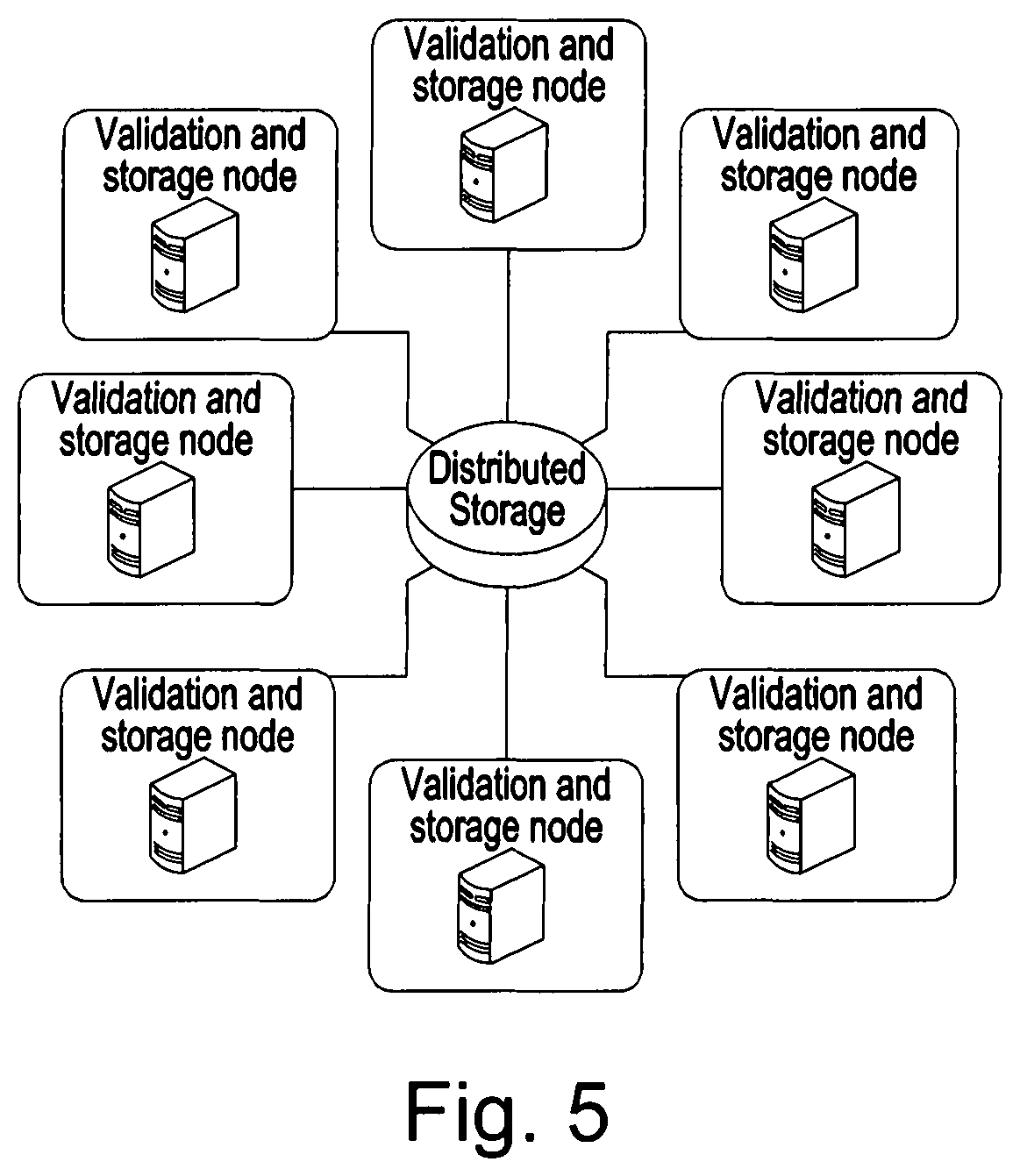Computer-implemented system and method for managing large blocks over a blockchain network
a blockchain and computer technology, applied in the field of computer-implemented systems and methods, can solve problems such as the problem of storage infrastructure, and achieve the effect of increasing the transaction ra
- Summary
- Abstract
- Description
- Claims
- Application Information
AI Technical Summary
Benefits of technology
Problems solved by technology
Method used
Image
Examples
Embodiment Construction
[0058]In this specification a solution to the problem of processing and storing large Gigabyte-sized blocks is described.
Types of Blockchain Network Nodes & Validation Nodes
[0059]A blockchain network may be described as a peer-to-peer open membership network which may be joined by anyone, without invitation or without consent from other members. Distributed electronic devices running an instance of the blockchain protocol under which the blockchain network operates may participate in the blockchain network. Such distributed electronic devices may be referred to as nodes. The blockchain protocol may be a Bitcoin protocol, or other cryptocurrency, for example.
[0060]The electronic devices that run the blockchain protocol and that form the nodes of the blockchain network may be of various types including, for example, computers such as desktop computers, laptop computers, tablet computers, servers, computer farms, mobile devices such a smartphones, wearable computers such as smart watch...
PUM
 Login to View More
Login to View More Abstract
Description
Claims
Application Information
 Login to View More
Login to View More - R&D
- Intellectual Property
- Life Sciences
- Materials
- Tech Scout
- Unparalleled Data Quality
- Higher Quality Content
- 60% Fewer Hallucinations
Browse by: Latest US Patents, China's latest patents, Technical Efficacy Thesaurus, Application Domain, Technology Topic, Popular Technical Reports.
© 2025 PatSnap. All rights reserved.Legal|Privacy policy|Modern Slavery Act Transparency Statement|Sitemap|About US| Contact US: help@patsnap.com



